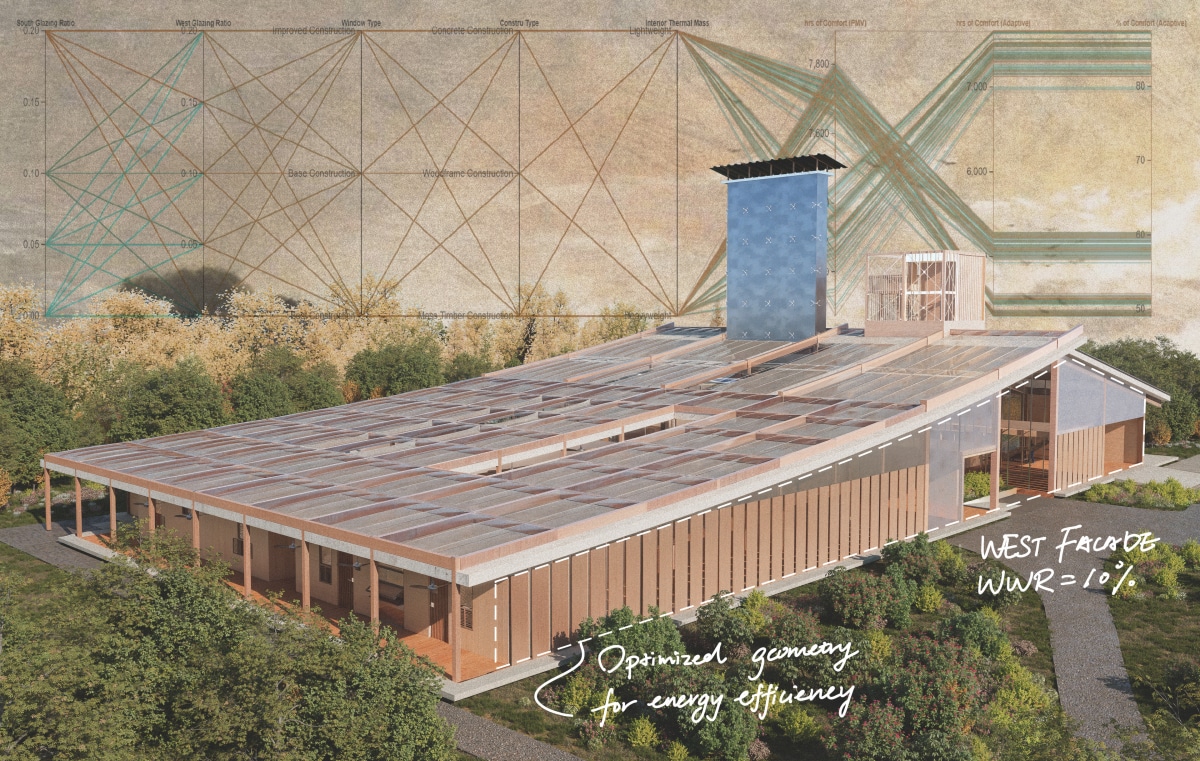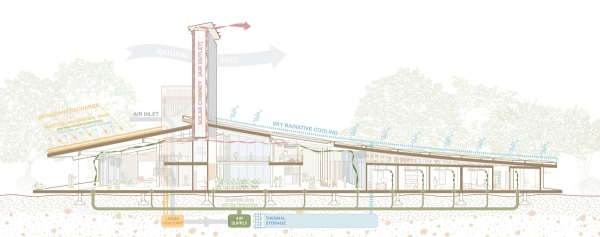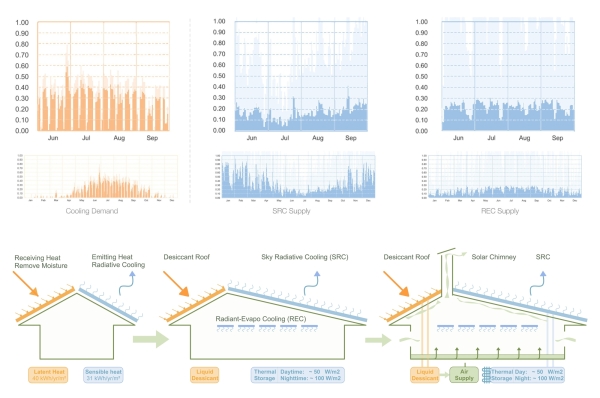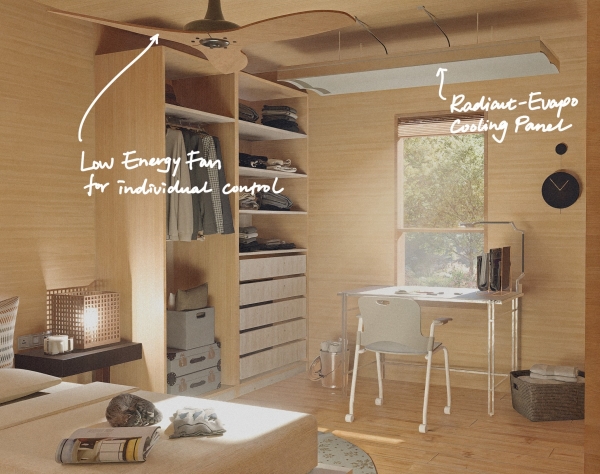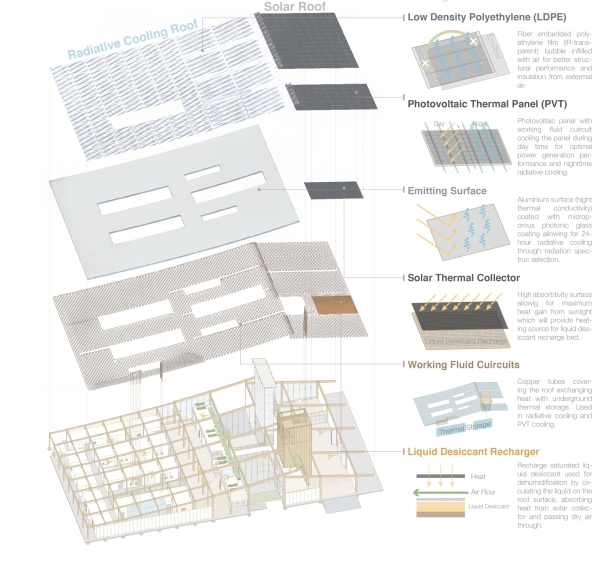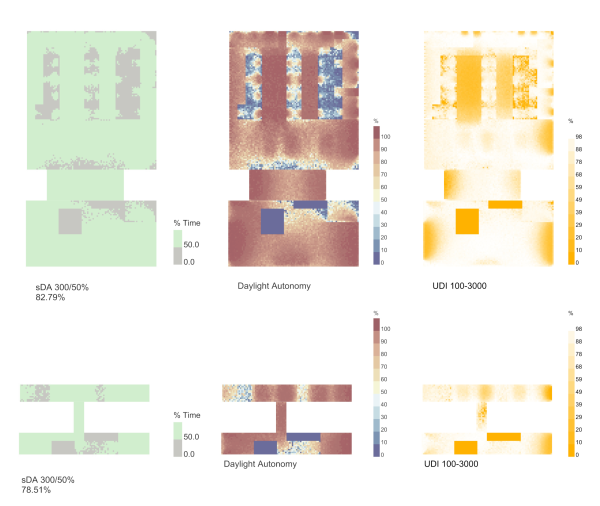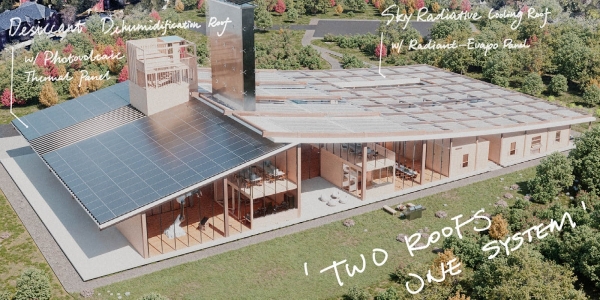AIA COTE Top Ten for Students: Twin Canopy Research Center
- Jessie Li
- Yudi Dong
- Henry Wang
Tucked within the verdant embrace of The Woodlands, Texas, the Twin Canopy Research Center offers more than a place to work. Designed as a beacon of sustainable architecture, the mass timber structure dissolves gently into its forested surroundings, cooled by an innovative hybrid system that breathes with the landscape.
The Center accommodates up to 16 resident researchers, offering both lodging and spaces for quiet focus and creative experimentation. A sunlit library, state-of-the-art laboratory, and hands-on fabrication shop support the full arc of inquiry, from reflection to realization. Its flexible gathering spaces host lectures, workshops, and conferences, fostering a vibrant community of environmental thinkers and makers.
Every aspect of the building reflects a deep commitment to performance and sustainability. Biogenic materials allow the structure to act as a carbon sink, while the façade is optimized for daylight without excessive heat gain. Water-efficient fixtures, adaptable open-plan interiors, and the preservation of native landscape all reinforce ethos of ecological integration.
At the heart of its climate-responsive strategy is a hybrid conditioning system. Radiative cooling is harnessed via an IR-transparent membrane-protected north roof surface, allowing heat to escape to the sky while preventing condensation in Texas’s humid climate. A liquid desiccant loop, recharged by solar heat from the south roof where integrated PV panels generate on-site renewable energy, dehumidifies incoming air. Each roof is sized and calibrated precisely to the building’s cooling and dehumidification needs, supplemented with an Evapo-Radiant Panel that captures the undepleted evaporative cooling potential of exhaust air. Together, these systems form a finely tuned architecture of performance.
Dr. William W. Braham, FAIA

